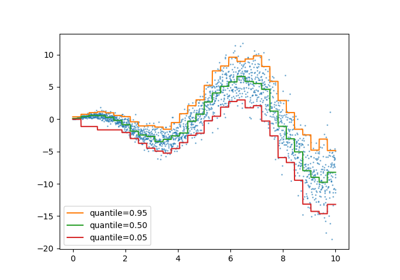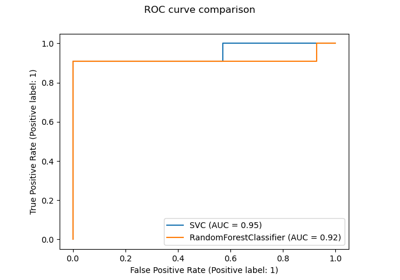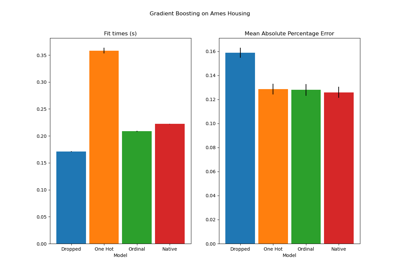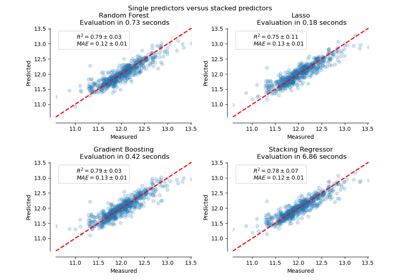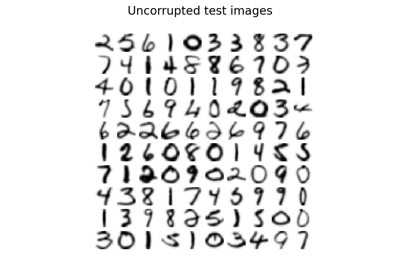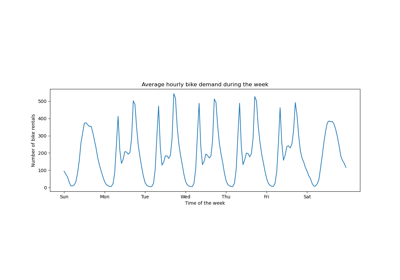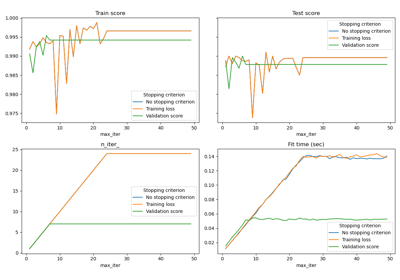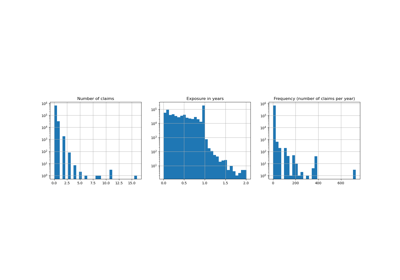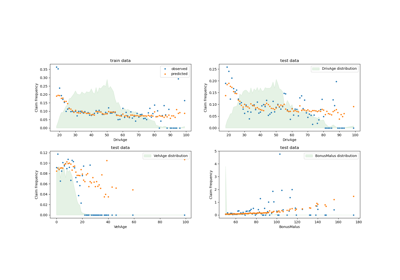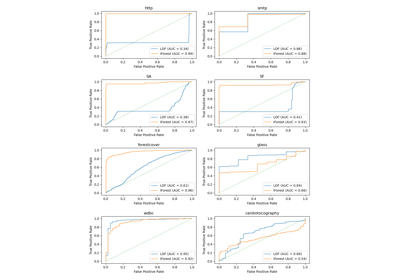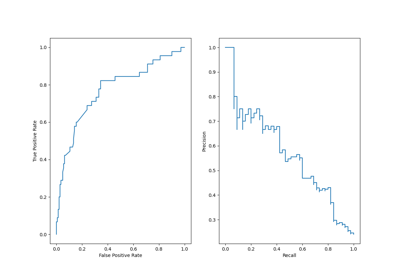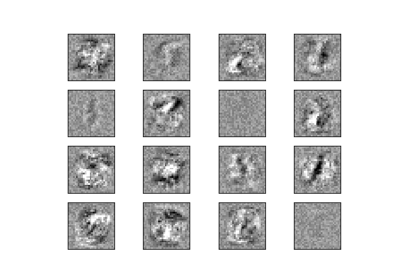sklearn.datasets.fetch_openml¶
- sklearn.datasets.fetch_openml(name: Optional[str] = None, *, version: Union[str, int] = 'active', data_id: Optional[int] = None, data_home: Optional[str] = None, target_column: Optional[Union[str, List]] = 'default-target', cache: bool = True, return_X_y: bool = False, as_frame: Union[str, bool] = 'auto', n_retries: int = 3, delay: float = 1.0)[source]¶
Fetch dataset from openml by name or dataset id.
Datasets are uniquely identified by either an integer ID or by a combination of name and version (i.e. there might be multiple versions of the ‘iris’ dataset). Please give either name or data_id (not both). In case a name is given, a version can also be provided.
Read more in the User Guide.
New in version 0.20.
Note
EXPERIMENTAL
The API is experimental (particularly the return value structure), and might have small backward-incompatible changes without notice or warning in future releases.
- Parameters:
- namestr, default=None
String identifier of the dataset. Note that OpenML can have multiple datasets with the same name.
- versionint or ‘active’, default=’active’
Version of the dataset. Can only be provided if also
nameis given. If ‘active’ the oldest version that’s still active is used. Since there may be more than one active version of a dataset, and those versions may fundamentally be different from one another, setting an exact version is highly recommended.- data_idint, default=None
OpenML ID of the dataset. The most specific way of retrieving a dataset. If data_id is not given, name (and potential version) are used to obtain a dataset.
- data_homestr, default=None
Specify another download and cache folder for the data sets. By default all scikit-learn data is stored in ‘~/scikit_learn_data’ subfolders.
- target_columnstr, list or None, default=’default-target’
Specify the column name in the data to use as target. If ‘default-target’, the standard target column a stored on the server is used. If
None, all columns are returned as data and the target isNone. If list (of strings), all columns with these names are returned as multi-target (Note: not all scikit-learn classifiers can handle all types of multi-output combinations).- cachebool, default=True
Whether to cache the downloaded datasets into
data_home.- return_X_ybool, default=False
If True, returns
(data, target)instead of a Bunch object. See below for more information about thedataandtargetobjects.- as_framebool or ‘auto’, default=’auto’
If True, the data is a pandas DataFrame including columns with appropriate dtypes (numeric, string or categorical). The target is a pandas DataFrame or Series depending on the number of target_columns. The Bunch will contain a
frameattribute with the target and the data. Ifreturn_X_yis True, then(data, target)will be pandas DataFrames or Series as describe above.If as_frame is ‘auto’, the data and target will be converted to DataFrame or Series as if as_frame is set to True, unless the dataset is stored in sparse format.
Changed in version 0.24: The default value of
as_framechanged fromFalseto'auto'in 0.24.- n_retriesint, default=3
Number of retries when HTTP errors or network timeouts are encountered. Error with status code 412 won’t be retried as they represent OpenML generic errors.
- delayfloat, default=1.0
Number of seconds between retries.
- Returns:
- data
Bunch Dictionary-like object, with the following attributes.
- datanp.array, scipy.sparse.csr_matrix of floats, or pandas DataFrame
The feature matrix. Categorical features are encoded as ordinals.
- targetnp.array, pandas Series or DataFrame
The regression target or classification labels, if applicable. Dtype is float if numeric, and object if categorical. If
as_frameis True,targetis a pandas object.- DESCRstr
The full description of the dataset.
- feature_nameslist
The names of the dataset columns.
- target_names: list
The names of the target columns.
New in version 0.22.
- categoriesdict or None
Maps each categorical feature name to a list of values, such that the value encoded as i is ith in the list. If
as_frameis True, this is None.- detailsdict
More metadata from OpenML.
- framepandas DataFrame
Only present when
as_frame=True. DataFrame withdataandtarget.
- (data, target)tuple if
return_X_yis True Note
EXPERIMENTAL
This interface is experimental and subsequent releases may change attributes without notice (although there should only be minor changes to
dataandtarget).Missing values in the ‘data’ are represented as NaN’s. Missing values in ‘target’ are represented as NaN’s (numerical target) or None (categorical target).
- data
Examples using sklearn.datasets.fetch_openml¶
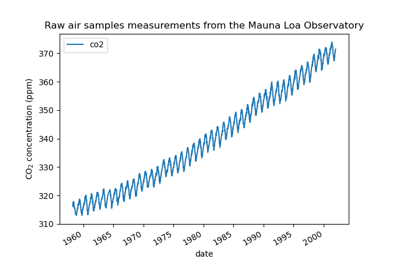
Gaussian process regression (GPR) on Mauna Loa CO2 data

MNIST classification using multinomial logistic + L1
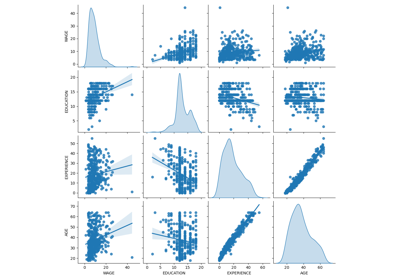
Common pitfalls in the interpretation of coefficients of linear models
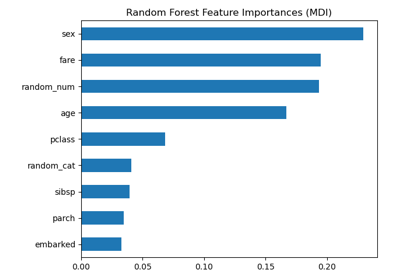
Permutation Importance vs Random Forest Feature Importance (MDI)
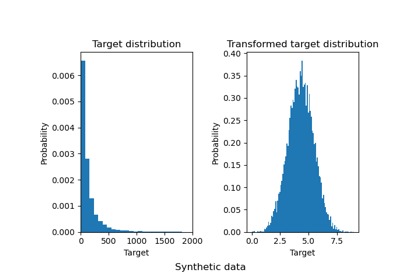
Effect of transforming the targets in regression model

